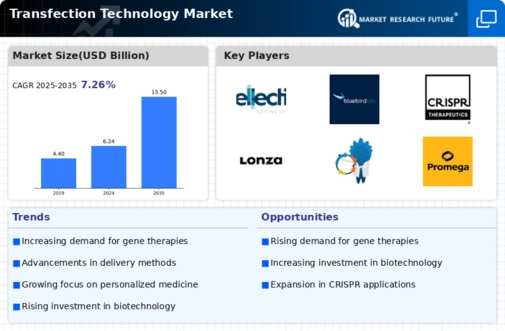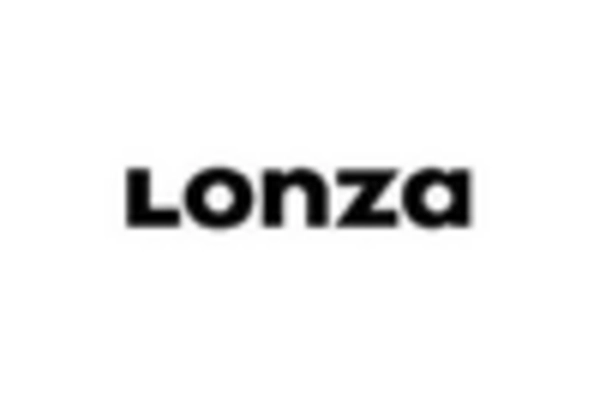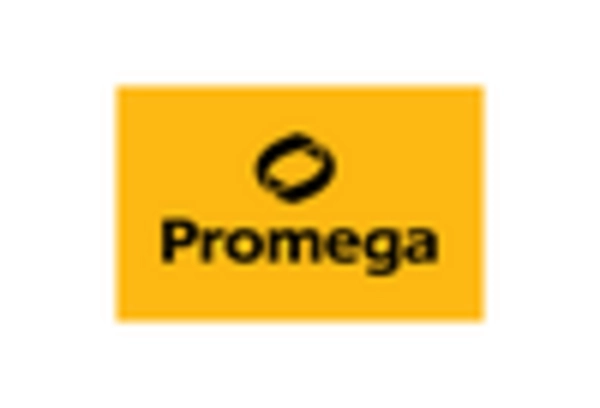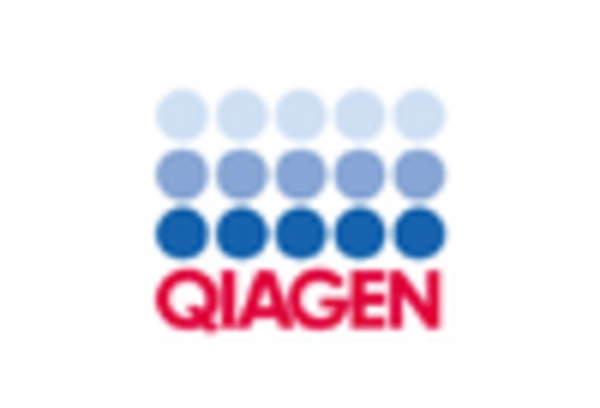Emergence of Personalized Medicine
The emergence of personalized medicine is reshaping the landscape of the Transfection Technology Market. As healthcare shifts towards tailored treatment approaches, the need for precise and efficient transfection methods becomes paramount. Personalized medicine relies heavily on the ability to deliver genetic material that is specific to an individual's genetic makeup, which necessitates advanced transfection technologies. The market for personalized medicine is projected to reach 2 trillion USD by 2030, indicating a substantial opportunity for transfection technology providers. This trend is likely to encourage collaborations between biotech firms and research institutions, fostering innovation in transfection methods that cater to the unique needs of patients, thereby driving market growth.
Rising Investment in Biotechnology
Investment in biotechnology is a key driver for the Transfection Technology Market. As governments and private entities allocate substantial funds towards biopharmaceutical research and development, the need for efficient transfection methods becomes increasingly critical. In recent years, funding for biotech startups has reached unprecedented levels, with estimates suggesting that over 20 billion USD was invested in 2023 alone. This influx of capital is likely to accelerate the development of novel transfection technologies, thereby expanding the market. Furthermore, as the industry evolves, the integration of transfection technologies into various applications, including vaccine development and cancer therapies, is expected to create new opportunities for growth within the transfection technology sector.
Advancements in Gene Editing Technologies
The Transfection Technology Market is experiencing a surge due to advancements in gene editing technologies such as CRISPR and TALEN. These innovations have revolutionized the way genetic material is manipulated, leading to increased efficiency and precision in transfection processes. As researchers and biopharmaceutical companies seek to harness these technologies for therapeutic applications, the demand for effective transfection methods is likely to rise. In 2023, the market for gene editing was valued at approximately 5 billion USD, and it is projected to grow at a compound annual growth rate of 15% over the next five years. This growth is expected to drive the transfection technology market as companies invest in developing more sophisticated delivery systems to enhance gene editing outcomes.
Increasing Prevalence of Genetic Disorders
The rising prevalence of genetic disorders is significantly influencing the Transfection Technology Market. As the global population ages and lifestyle-related diseases become more common, the demand for gene therapies and genetic interventions is on the rise. According to recent estimates, approximately 1 in 10 individuals are affected by some form of genetic disorder, which translates to millions of potential patients seeking innovative treatment options. This growing patient population is likely to drive the demand for effective transfection technologies that can facilitate gene delivery and expression. Consequently, pharmaceutical companies are increasingly investing in research to develop targeted therapies, further propelling the transfection technology market as they seek to address these pressing health challenges.
Regulatory Support for Gene Therapy Approvals
Regulatory support for gene therapy approvals is a crucial factor propelling the Transfection Technology Market. As regulatory bodies become more receptive to gene therapies, the pathway for bringing innovative treatments to market is becoming clearer. Recent changes in regulatory frameworks have streamlined the approval process for gene therapies, encouraging companies to invest in transfection technologies that facilitate these treatments. In 2023, the number of approved gene therapies increased by 30%, reflecting a growing acceptance of these innovative solutions. This trend is expected to continue, as regulatory agencies recognize the potential of gene therapies to address unmet medical needs. Consequently, the demand for effective transfection technologies is likely to rise, as companies seek to develop and commercialize new gene-based therapies.

















Leave a Comment